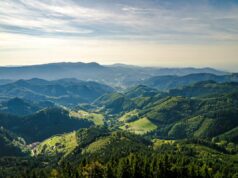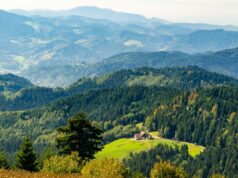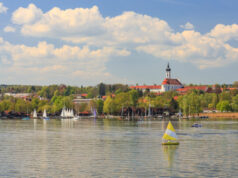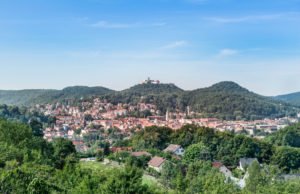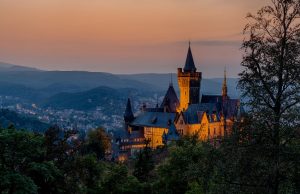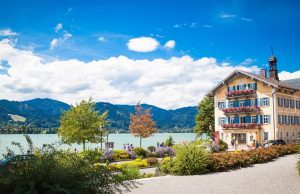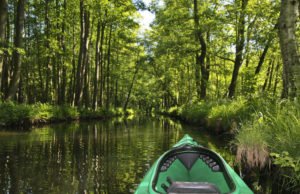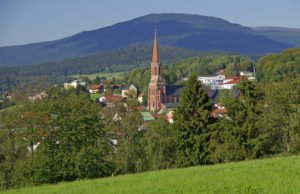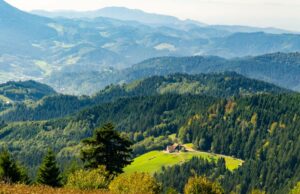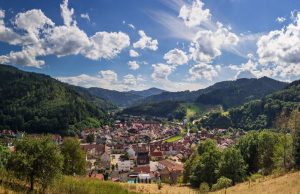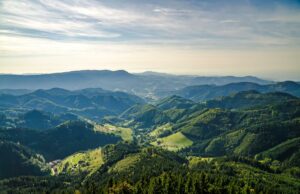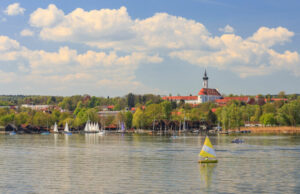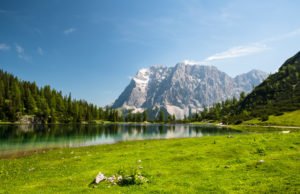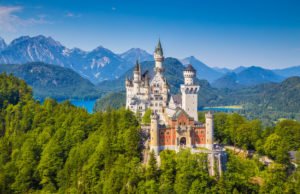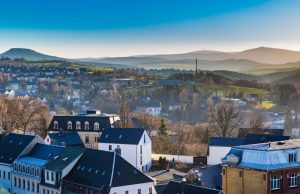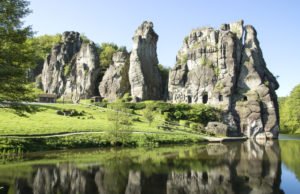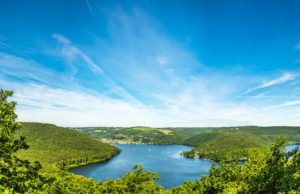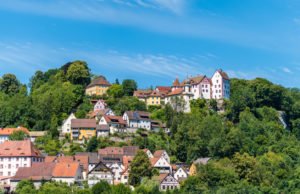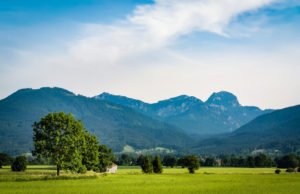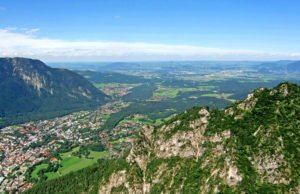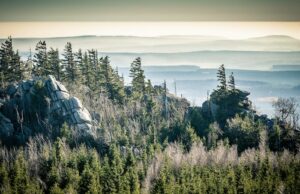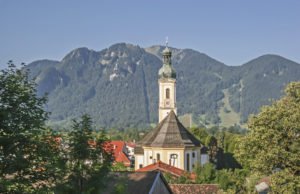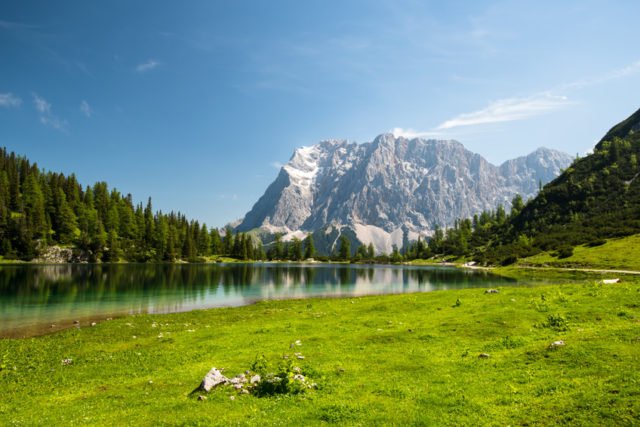
Visitors to Germany don’t always appreciate quite how varied a country it is in so many ways, not least geographically. From the low plains of the north to the densely urban and industrial regions of the west, the country is often thought of by outsiders as being largely low-lying and heavily forested. In fact, much of the southern half of the country is mountainous – or at least hilly – and this is very much the case for the state of Bavaria.
This fiercely proud region rises steeply into the Alps along its southern edge, and boasts Germany’s highest point: the majestic peak of the Zugspitze mountain, perched directly on the border with the Austrian state of Tyrol, and dominating its surroundings with a summit reaching 2962m (9718ft).
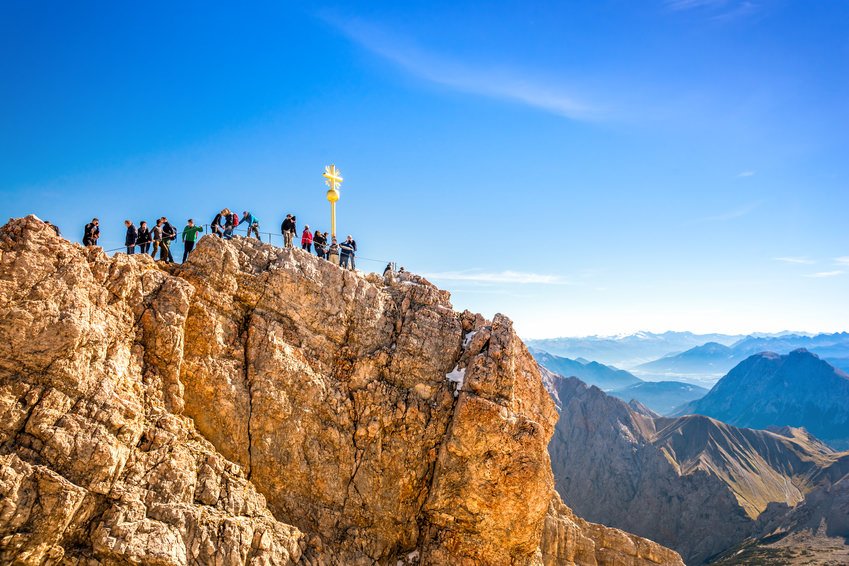
Alpine Country
The northernmost ranges of the Alps form a mountainous ribbon along the southern border of Bavaria, and while neighbouring countries may boast higher and more numerous peaks, the Zugspitze is nonetheless an impressive berg and well worth a visit.
From the Austrian side, the mountain and its surrounding range forms part of a wide vista of peaks and high plains, and so its height is perhaps not fully appreciated. However, from the German side, Zugspitze rises dramatically from the valley of the Loisach River and the Eibsee lake. This change from the relative lowlands of local resort Garmish-Partenkirchen to the summit covers over 2,000m in elevation and makes for an imposing sight.
Incidentally, today’s Zugspitze was not so long ago just one of three summits of similar height. Today’s main attraction is the eastern peak, located entirely within Germany and remaining more or less in its natural state. A slightly lower middle summit became home to a cable car base in 1930, losing its unspoiled appeal, while the previously highest western peak was demolished during the late 1930s to make way for a military installation which never materialised. Without this last alteration, the highest point would be four metres higher than today.
Getting Up There
The Zugspitze peak is served by three cable cars and a mountain railway, which between them carry an estimated half a million visitors to the summit each year. One of the cable car routes, originating in the town of Eibsee, is currently undergoing reconstruction and will be reopened fully in December 2017, making access even easier and quicker.
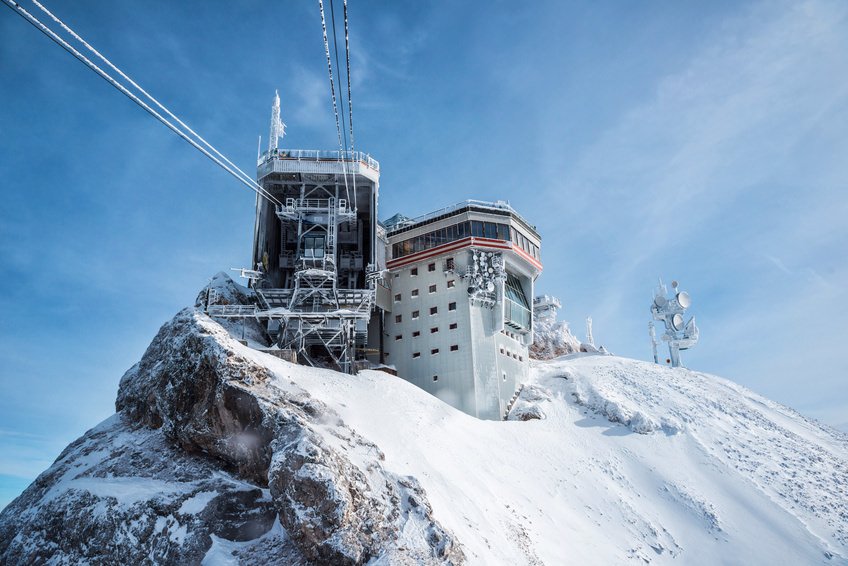
Alternatively, in good weather, hiking from the base to the summit is possible, but will require an overnight stay for all but the very fittest and most experienced of mountain hikers.
View from the Top
Upon arrival at the summit, the visitor is treated to a spectacular view taking in more than 400 mountains, spread across three countries aside from Germany. The neighbouring Tyrol region of Austria is literally only metres away as the border cuts across the summit ridge, while on cloudless days the more distant peaks of Switzerland and Italy are clearly visible. Of course, there are also excellent views from northwards into Germany, over Garmisch-Partenkirchen, Eibsee, and far beyond. The summit also provides a great opportunity to view the three glaciers which began their life in the Zugspitze massif.
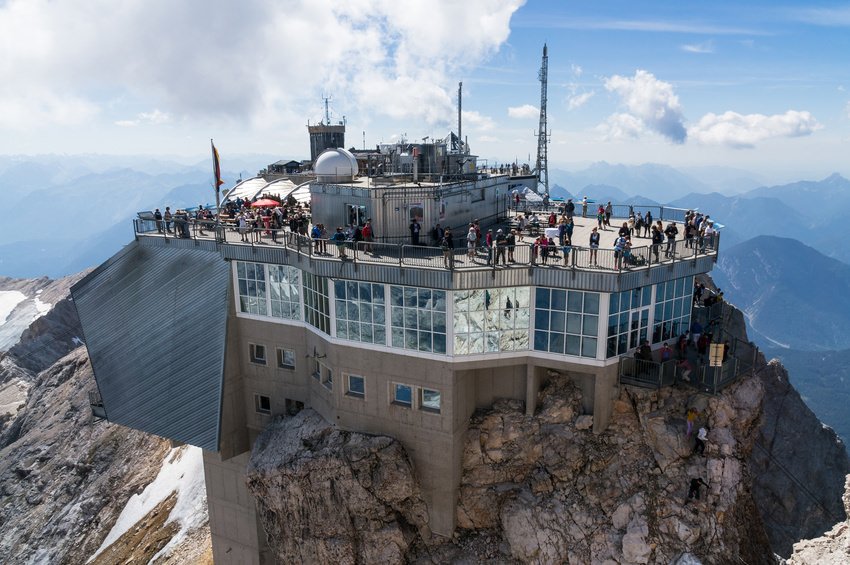
In summer, the high meadows around the peak make for excellent hiking, although as always in the mountains, ensure you’re properly prepared with suitable clothing and supplies, and be sure to check a reliable weather forecast before leaving the main tourist areas. There are also numerous mountain climbing opportunities, with plenty of specified and well-maintained routes, or possibilities for independent exploration. Paragliding is also a popular pastime for those with a real head for heights and provides perhaps the most daring way of descending back to the valley.
In winter, the area is served by many smaller gondolas and mile upon mile of skiing and snowboarding pistes reaching down into both Germany and Austria, and its high altitude generally ensures good snow conditions throughout the season.
Surroundings
Zugspitze and the surrounding Alps are perhaps best explored from a base in the resort town of Garmisch-Partenkirchen, around 30km from Zugspitze itself, and only a short journey away by a regular train service. Garmisch-Partenkirchen is a popular winter sports destination with a strong history in this regard – it was the location for the 1936 Winter Olympic Games, and still regularly hosts international skiing and ski jumping events.

As you’d expect from a resort town, there’s no shortage of accommodation or entertainment, and while the Garmisch section of the town offers all the modern amenities you could ask for, Partenkirchen retains a distinctly old-world Bavarian atmosphere to delight the visitor with a feel for history.
The town is around an hour’s drive or train journey from Munich, the biggest city in the area, which also has a large international airport serving as a major entry point for southern Germany. Alternatively, the area can be reached from the Austrian side via Innsbruck airport. This makes for a longer journey, but Innsbruck is a destination for several low cost airlines, and so can make a convenient and inexpensive choice for some – not to mention providing an excuse for a beautiful trip through the Alps on the way to your base.
Food and Drink
This being Bavaria, there’s no doubt that beer lovers will be amply catered for. The state boasts well over a thousand independent breweries producing beer of all kinds, yet always following strict laws of purity. The specialities of major Munich brands such as Augustiner, Paulaner, and many others are readily available throughout the numerous bars and guest houses in the Zugspitze area. However, there is also a wide range of wines from German vineyards as well as nearby Austria and Italy. And of course, as with most of Germany, you’re never far from the ubiquitous Apfelschorle or sparkling apple soda, which makes a beautifully refreshing drink on a hot day.
As you’d expect from an international ski resort, there is a broad range of food available in the many restaurants and bars, from pizza to steaks, burgers, and other worldwide staples. However, it’d be a mistake to visit Bavaria and not sample the local cuisine, and Zugspitze is no exception. In summer, sharp and crispy salads combine the freshest of locally grown produce with the many excellent cured meats and cheeses of the area, usually made to traditional methods by small producers, while in winter much heartier dishes are the norm.
If the idea of a meal made from dumplings (Knoedel), noodles (Spaetzle), Sauerkraut, and pot-roast pork (Schweinsbraten) seems stereotypically German and somewhat stodgy, you’ll be in for a pleasant surprise. The cold winter climate makes this style of cooking the perfect choice for those with healthy appetites, and the local fare will provide delicious fuel for a day on the slopes or the high meadows.



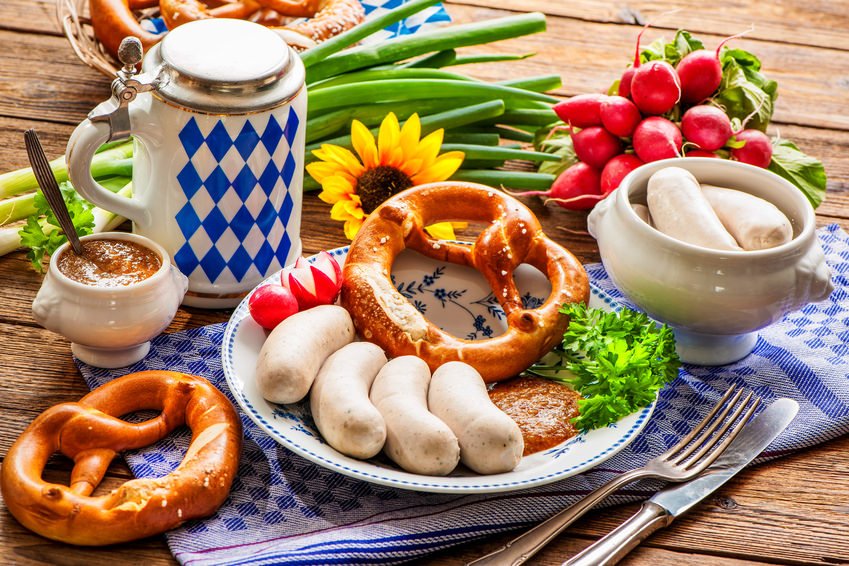
Language
English is widely spoken and understood in the Zugspitze area thanks to its large tourist population, although, as always, a few words of German will be highly appreciated and may even lead to preferential service! However, German-speaking visitors should be aware that this part of Germany is a long way from the capital Berlin, both geographically and culturally, and the local Bavarian dialect can present serious difficulties even for native-speaking Germans.
Don’t be surprised if you find local conversations and even some menu items, signs, and so on more than a little hard to decipher, but Standard German is perfectly acceptable and most Bavarians will automatically switch to it in when speaking with visitors. Nonetheless, expect to hear plenty of unusual dialect expressions such as the greeting “Griass di!”, the local goodbye “Pfiat di!”, and other colourful phrases that leave you in no doubt that Bavarians consider themselves very much independent people rather than simply regional inhabitants of Germany!
Why Visit Zugspitze?
Nestled as it is on the northern edge of the Alps, Zugspitze and surrounding areas offer all the benefits of a winter sports holiday, while still being within easy reach of urban areas including Munich. For spectacular scenery, great skiing, delicious local food, and a wide variety of ways to pass the time away from the slopes, Zugspitze makes an excellent choice.


